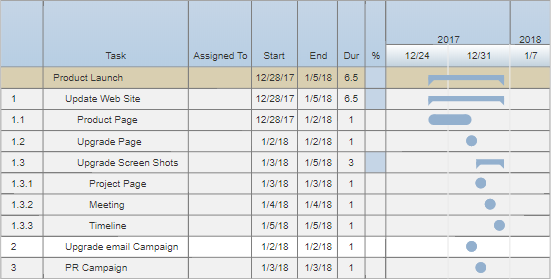Even the word is foreboding. Deadline. Break it down: Dead. Line. It conjures up all sorts of bad imagery—as
though we're queuing up for our own demise. Is it any wonder we stress over deadlines?
Let's look first at the cause of deadline stress. It's being late. No one wants
a project to run behind and risk missing the deadline. It means cramming more effort
into less and less remaining time. It means people get upset. It causes people to lose sleep. It's just no fun.
The key is to a follow a simple three-step formula. It may take a little
time to get used to, but stick with it. Develop it as part of your daily practice
and you'll take a lot of stress out of your life.
Here are the three steps the world's most successful people use to complete a project of any size on time.
- Identify the biggest, most important tasks first. Begin by breaking
each of them into smaller tasks. Do this until each task can be accomplished
in no more than two days. Break up big, vague tasks like "update the website" into
a larger number of more specific tasks. This will enable you to estimate, with
much greater accuracy, the time you need to complete the entire project.
- Assign tasks and chart the schedule. Make a Gantt chart—a table showing
each task, the person who will do it, the start date and how long it will take.
Be realistic about the work load of each person. Spread the tasks out so that a
new one doesn't begin until the previous one is complete. If the work of one
person has to be complete before a task performed by someone else can start,
build this in, too. Be sure to take holidays and weekends into account.

- Estimate the completion date and monitor progress. The end date of your
last task tells you when your project will be complete. Update your chart with
the actual dates of completion for each task as the project progresses.
This will tell you, at a glance, whether your project is on schedule. If it's
not, you will know precisely how far it is behind so you can make better management decisions.
SmartDraw simplifies the process of managing any project. Creating a
visual project plan is faster and far more effective than using a spreadsheet,
text editor, or pen and paper. And it doesn't require the steep learning curve
of many project management software programs. It's easy to edit and share, too.
SmartDraw will automatically convert your task outline into a
Gantt or project chart with one click. You can also connect your
plan to a Trello board so your team can have a easy "to-do" list
to follow and act on.